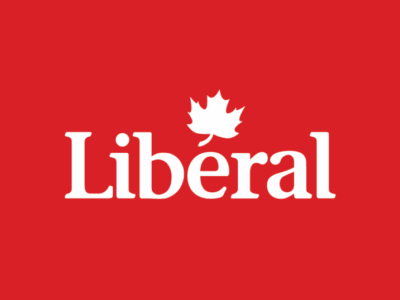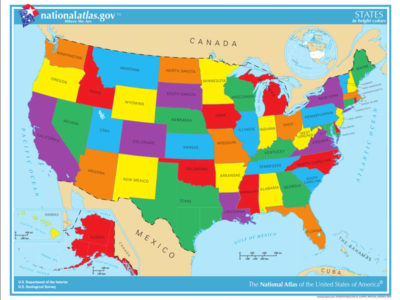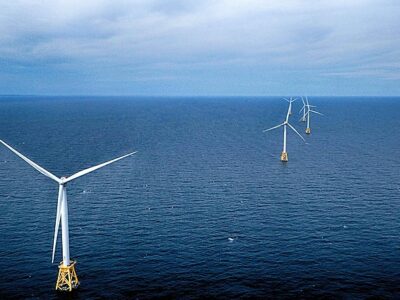Canada’s Election: Real Stakes for the Planet
Despite cynical criticisms of no differences between the parties, Carney and the Liberals are an obvious choice.
 Nearly four decades ago, New York Times columnist Flora Lewis penned a piece, entitled “Worthwhile Canadian Initiative,” that became infamous in journalistic lore: The New Republic crowned it as the World’s Most Boring Headline because all three words were extremely boring.
Nearly four decades ago, New York Times columnist Flora Lewis penned a piece, entitled “Worthwhile Canadian Initiative,” that became infamous in journalistic lore: The New Republic crowned it as the World’s Most Boring Headline because all three words were extremely boring.
No more.
Donald Trump’s demented economic war against America’s largest trading partner, and his even more deranged desire to turn a sovereign nation into the 51st state, has driven the economy and foreign policy into crisis, forcing people this side of the border to actually pay attention to the folks up north. And while Trump has taken a chainsaw to the rule of law and democratic institutions, in three days Canada will complete a free and fair election. I’m a dual citizen, so of course I find Canada fascinating, but maybe Canada is more interesting that the folks down south want to acknowledge.
But is there really anything at stake in Monday’s contest for the environment?
Most observers think not. A recent piece in The Globe and Mail described the battle between Mark Carney’s Liberals (currently leading in the polls) and Pierre Poilievre’s Conservatives as a choice between Tweedle-dum and Tweedle-dee. And today, another Globe op-ed (from a Harvard Law School researcher) conceded that Poilievre has no climate plan but it does not matter because Carney and the Liberals do not have any, either, and so “it is hard to tell the two men apart.” The newspaper’s Tory-leaning editorial board argued that it is basically a campaign about nothing.
As a Canadian citizen, I must politely disagree. As an American citizen, this is nonsense. Whatever one might think about the Liberal platform under Carney, it is miles ahead of the Tories. And that does not even include both Carney’s and Poilievre’s other records and commitments.
Poilievre started his campaign last fall (knowing that elections would occur this year), with the phrase “Axe The Tax.” The tax in question was the consumer carbon tax, which had become very unpopular. Consumers saw it at the pump and did not like it.
Carney defused this issue as soon as he became Liberal leader by agreeing to the proposal. That’s bad policy – combatting climate change requires a price on carbon – but the tax was unpopular, and Carney made a tactical retreat on it. He thus also destroyed Poilievre’s main campaign issue.
But Poilievre won’t stop, and that’s why the Liberals are so much stronger on climate.
While Carney has excised the consumer carbon tax, he is keeping the industrial carbon tax and in fact wants to expand it. What’s the difference? The industrial tax is something of a misnomer. It is actually a cap-and-trade plan, or what Canadian call a LETS: Large Emitter Trading System, similar to state-level cap-and-trade systems in the United States. And it is startlingly effective: according to the Canadian Climate Institute, it is three times as efficient as the consumer charge, and by far the most effective Canadian policy to reduce emissions. CCI also claims that consumer costs are minimal, in no small part because it focuses on products that are exported. Ending it would be awful for Canada’s climate progress.

So of course Poilievre wants to axe it. This is straight out of the US right-wing playbook: destroy environmental regulations and deny that climate change is even a problem.
If we look at both candidates’ policies, we can see that the Canadian parties are beginning to line up with their US counterparts viz. the Liberals espousing cautious, and probably inadequate policies but trying to move forward, and the Conservatives trying to burn down the system. The two parties’ difference on the industrial carbon charge alone is enough to make this an easy choice. But it gets even clearer.
Carney wants to impose a carbon tariff on imports, which is a pretty standard pro-climate policy and increase incentives for EV vehicles. Poilievre wants to get rid of EV incentives, and as an added bonus, wants to reintroduce single-use plastics while of course bringing back plastic straws.
Yes, yes: both Carney and Poilievre have talked about making energy development easier, more pipelines, and making Canada an energy superpower. But Canada is heavily dependent upon its energy industry – it is something of a petro-state already. If any politician runs against oil and gas, he or she will soon be a former politician. Justin Trudeau’s consumer carbon tax was a fairly tepid move forward, and was greeted with hysterical opposition. The left-wing New Democratic Party, currently a distant third, is no different: British Columbia’s NDP Premier, David Eby, has just axed his own province’s consumer carbon tax.
The task in a democratic system is to tack and shift to move ahead while not undermining your political base. Carney has done that quite effectively, which is remarkable for someone who has never before run for elective office.
And if we just pull back for a moment, the contrast becomes clearer. Carney is the former head of the Bank of Canada and the Bank of England, but for our purposes, the key point is that he has long been deeply involved in combatting climate change. He was literally the UN Special Envoy for Climate Change and Finance, as well as the co-chair Glasgow Financial Alliance for Net Zero (GFANZ) – which describes itself as “a global coalition of leading financial institutions committed to accelerating the decarbonization of the economy.” GFANZ has justifiably gotten criticism for being long on talk and short on action, and has suffered new pressure from the Trump Administration, but the point here is Carney is a climate guy. He has dedicated large chunks of his life to dealing with this issue.
For his part, by contrast, Poilievre is simply a long-standing party politician whose job is to unify Conservative voters, many of whom are climate deniers. Both men will try to build their respective coalitions, but Carney comes with a pre-existing commitment to and knowledge base regarding the environment. Even apart from ideology, the best one can say about Poilievre is that he doesn’t really care about the environment. His whole m.o. is adopting right-wing frames like “axe the tax” and bring back plastic straws: he sees the world through those frames and slogans, and that is very bad for the planet.
It should hardly surprise anyone that a “Liberal” Party is more pro-environment than a “Conservative” one (unless you are Australian). But it really, really matters here. The world is going to need leaders who understand and care about preserving the planet, especially since for the next 1,361 days (but who’s counting) the United States will have one devoted to destroying it. There is a genuine difference between the parties and their visions for Canada’s future, and the stakes are very, very real. Pointing it out is, well, worthwhile.






Reader Comments